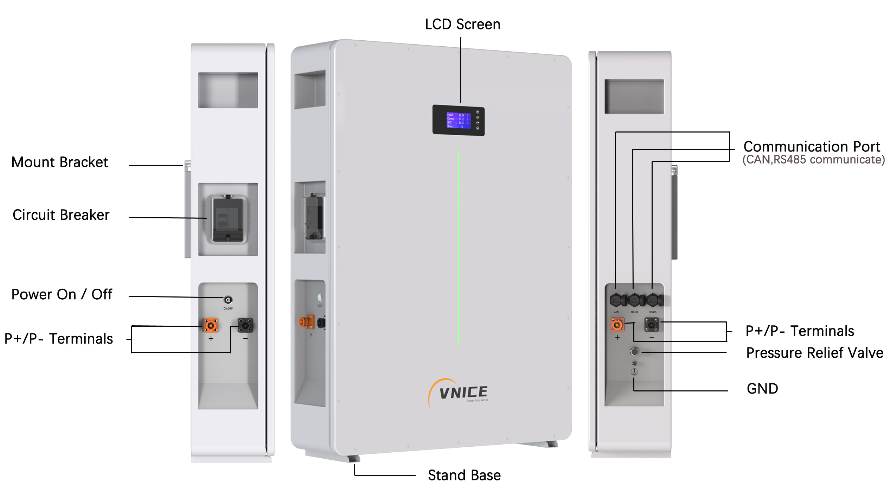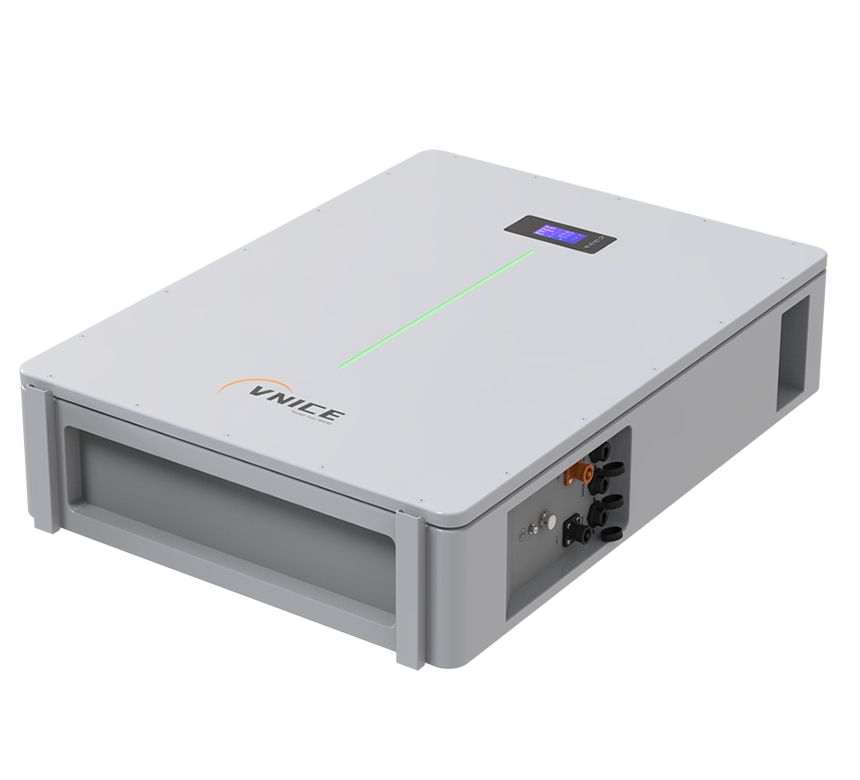Batteries
ForzaSeries

Razzi 5Kwh/10Kwh Residential Batteries
Empower your home with more power and higher efficiency. IP65 ultra-high protection level,
suitable for indoor and outdoor installations

IP65
Waterproof level
5 Years
Warranty
6000
Cycle life
High Compatiblity
Compatibility to 90% of match leading inverter brands on the market

LiFePO4 Battery
Smart "BMS"
Multiple Protection Design
The battery module adopts single 50Ah LiFePO4 battery without explosion and fire Advanced intelligent BMS provides multiple battery protection such as over temperature, over voltage, over current and overcharge
Over Current Protection
Over Voltage Protection
Over Charge Protection
Over Discharge Protection
Over Temperature Protection
Short Circuit Protection
Power Your Home
Keep your appliances runing suring an outage
Reduce carbon emissions
Save 50% energy Cost

Lifecycle ≥ 6000 cycles
Longer Service Life
Through the laboratory battery cycle life test,
More than 6000 charges and discharges,
The capacity of the cell can keep above 80% of original rated

| Model No | Razzi 5K | Razzi 10K |
| Nominal Parameters | ||
| Voltage | 51.2V | 51.2V |
| Capacity | 100Ah | 200Ah |
| Energy | 5.12Kwh | 10.24Kwh |
| Dimensions (LxWxH) | 480x170x600mm | 600x170x820mm |
| Weight | 48kg | 92kg |
| Basic Parameters | ||
| Life Times (25℃) | 20 Years | |
| Life Cycles (80% DOD, 25℃) | 6500 Cycles | |
| Storage Time / Temperature | 5 months @25°C; 3 months @35°C; 1 month @45°C | |
| Operation Temperature | -20°C to 60°C @60+/-25% Relative Humidity | |
| Storage Temperature | 0°C to 45°C @60+/-25% Relative Humidity | |
| Lithium Battery Standard | UL1642, IEC62619, UN38.3, ROHS, CE-EMC | |
| Enclosure Protection Rating | IP65 | |
| Electrical Parameter | ||
| Operation Voltage | 44-58Vdc | 44-58Vdc |
| Max.charging Voltage | 58Vdc | 58Vdc |
| Max.charging and Discharging Current | 100A | 150A |
| Max.Power | 5120W | 7680W |
Residential
Farm
Remote Areas
Data Center
Bus Station
Small Enterprise
Application
A 20kW on grid solar system is ideal for homes, farms and medium businesses. A 20kW solar system belongs to 48V family energy storage series. This high-quality solar system provides reliable power, without any compromise on your lifestyle. Capacities of this on-grid solar system can power a house of large size or larger properties.
Is a 10kW Solar System Suitable for My Home?
A 10kw solar panel system is best suited for lager homes, or homes with more
energy-intense appliances. With the characteristics of safety, long service
life, and perfect after-sales service, VNICE Razzi Series will be the best
choice for your household energy storage meeting your higher power needs.
An on-grid residential energy storage system can also live up your expectations
of recovering the cost quickly because it allows a combination of exporting
electricity to the grid and using the power in the home. In this case, you can
not only produce energy you need but sell the rest to have an extra profit.
10kw solar systems produce up to 5kw per day in the battery type of lithium iron
phosphate. 10kw systems may require 2 parallel batteries due to their ability to
export more than 5kw at a time. As a 10kW system can produce more power, it is
more expensive than the smaller ones. However, if you have higher energy
requirements, it’s often quicker to pay off the cost of installation by
installing a system with a larger capacity.

How Many Solar Panels are in a 10kW System?

The typical solar panel is 250-370 W, so if you opt for this type of panel, you'llneed to install eight to twelve panels in total to create a 10kWsystem (10000 W). Below is a table showing how many panels you would need for a 10kW system,with varying power outputs:
| Panel Power Output | Number of Panels for a 5kW System |
| 250 | 40 |
| 300 | 34 |
| 350 | 28 |
| 370 | 27 |
FAQs: 10kw Solar Systems
With an off-grid solar system, you’re completely reliant on the sun and energy stored in batteries to power your home or business. If you decide to install an on-grid solar system, you will always have access to electricity from the utility grid whether or not your solar system is producing energy.
With an off-grid solar system, your solar system is working independently from the power grid and it can continue operating. If you have a grid-tied solar system and when the grid goes down, you will not have electricity, unless you opt for a grid-tied solar system with battery backup.
If your system is not tied to a grid, you won’t receive an electric bill. However, off-grid systems are often more expensive because of the additional equipment like batteries needed. If you opt for a grid-tied system, you could still see delivery charges or demand charges on your electricity bill, even if your solar system provides 100% of your electricity.
The below table shows average solar panel of per kW costs of some countries.
| Country | Cost Per KW |
| India | $793 |
| China | $879 |
| Canada | $2,427 |
| Russia | $2,302 |
| Japan | $2,101 |
| South Africa | $1,617 |
| Australia | $1,554 |
| United States | $1,549 |
| France | $1,074 |
| Germany | $1,113 |
Therefore, the rough cost of 8 kW solar system in Germany should be —$1113*8=$8904.
Likewise, the rough cost of 8 kW solar system in France should be—$1074*8=$8592.
There are four important factors that influence the cost of solar panels.
- Wholesale equipment costs:As a young industry, factories have been able to automate processes, increase manufacturing and logistics scale and dramatically reduce the cost per watt of a solar installation.
- compensation: In order to encourage households to select solar energy, government implements intriguing policies to attract citizens to select solar energy, such as The Solar Rebates. The introduction of local solar rebate schemes in particular states has had a dramatic effect on the cost of solar
- Competition and Cheap Solar: there are thousands of contractors to install solar. As a result, the margins have been forced to be very slim in the market.
You can expect 10kW solar systems to last 25-30 years if installed correctly. After that, the efficiency of the solar battery will start lowering for many factors. Also, the panels will become inefficient when producing electricity over time, and thus their solar system output will also decrease. In general, the power degradation rate of a 10kW solar system with battery storage is approximately 0.8% per year and the degradation process can take up to 30 years to take effect on a high-quality solar system.
Modular design;
Standardized production;
Strong commonality;
Easy installation, operation and maintenance;
Perfect BMS protection and control system for over current, over voltage,
insulation and the like;
Utilization of lithium iron phosphate cell with low internal resistance and high
rate;
High consistency of internal resistance, voltage and capacity of single cell;
A long life cycle of around 5,000 times; a service life of more than 10 years;
Fast charging and discharging support;
Visual LCD display: allows you to set operating parameters, view real-time data
and operating status, and accurately diagnose operating faults.
Communication protocol: CAN2.0 and RS485, which can be used in various
scenarios.
WE OFFER BEST IN CLASS SERVICE FOR YOUR NEEDS
86-13631354535

-

Message
